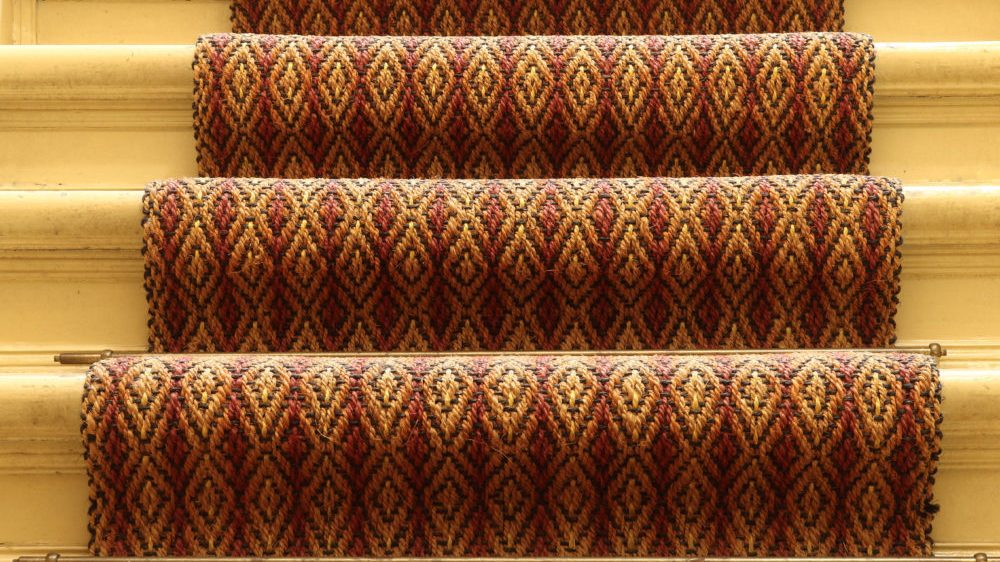
Gorgeous hardwood or tile floors are enhanced by the added beauty of area rugs. This is especially true in hallways and on stairs, where decorative carpet runners can add color, increase safety and help buffer sound.
Carpet Runners Add Depth and Character
Carpet runners are typically used in hardwood or tile hallways and on stairs with a finished hardwood surface. In both cases, the carpet can provide color and pattern that complement the hard flooring surrounding it.
In addition to muting the sound of footfalls, carpet runners also increase safety by providing traction for those who use the stairs. They can help prevent the slips and falls that bare treads can cause, especially for people in socked feet. A hallway runner can serve the same purposes, but to keep such a rug from sliding, be sure to place it atop a non-slip rubber pad two inches smaller than the runner on all sides.
Runners can be fashioned from either loop or cut pile carpet. Because halls and stairs are high-traffic areas, the carpet pile should be dense and made of nylon or wool, the most durable carpet fibers.
Continuity from Halls to Stairs
If the hallway in question leads to the staircase, the runner can flow as one continuous piece through the hall and up the steps, even on a staircase with a landing followed by a switchback turn. More complex is a staircase that turns in a spiral, with steps that become triangular in shape. A professional installer should be able to carpet such a staircase beautifully.
Step-By Step-Details to Beautiful Staircase Design
Colors and Patterns
Be sure to coordinate the runner’s color with adjacent window treatments and any nearby furniture, particularly chair fabrics. A dark carpet provides a rich contrast against a stair tread stained in a light wood tone or painted white. Edge binding in a complementary color along each side of the runner helps increase the contrast.
Installing a Stair Runner
Unless you have experience installing carpet, choosing a professional installer is best, particularly with a spiral staircase. Padding is cut and laid on each tread before the carpet is installed. The thickness and density of the pad is important. Because stairways draw significant traffic, choose a pad that is 7/16-inch thick with a density of 6 to 8 pounds per cubic foot.
Carpet on stairs is fastened at the bottom and the top of each riser before curving up and over the front edge, or “nosing,” of the stair tread. The carpet must be snug and secure on each step to prevent shifting and bulging.


